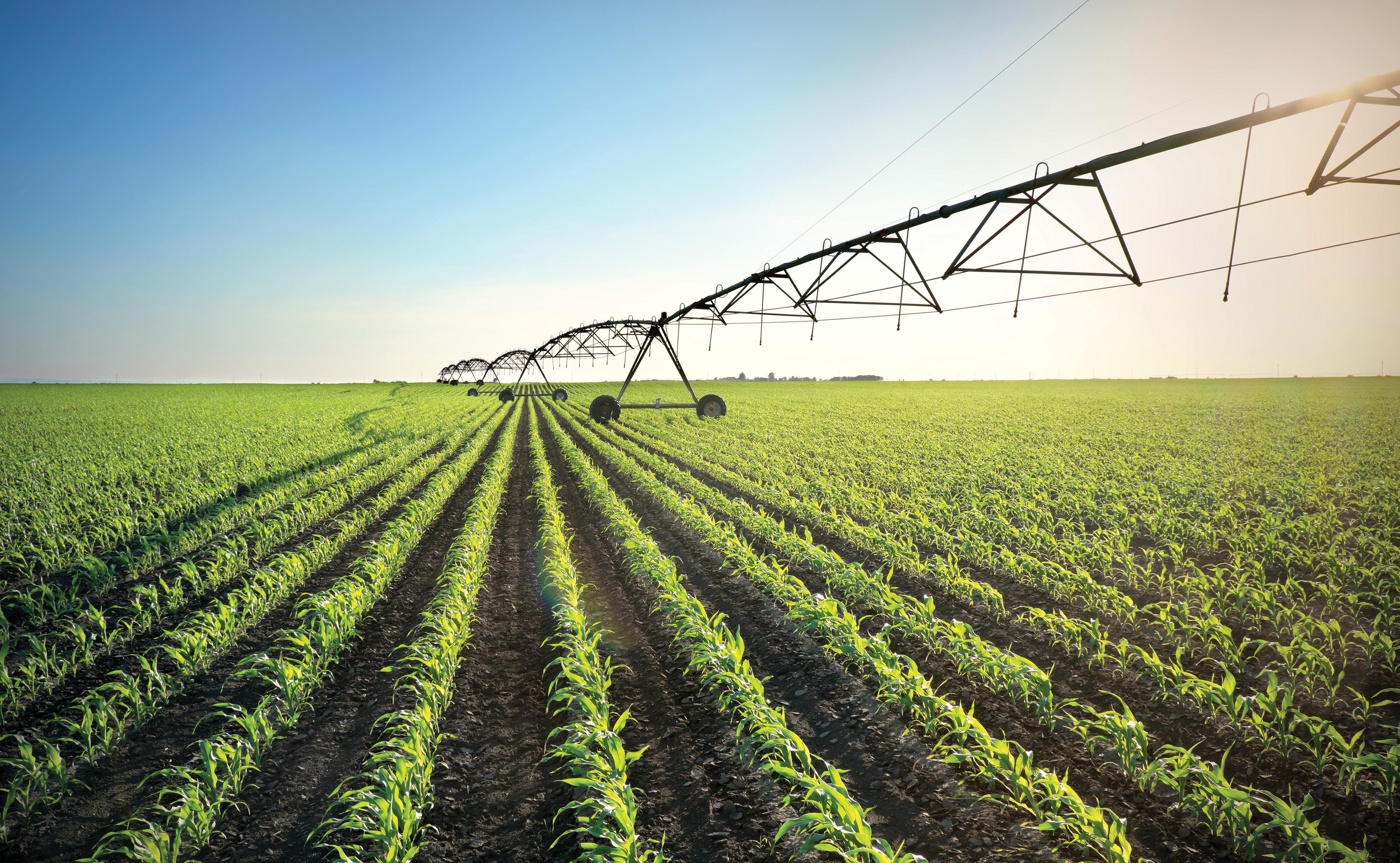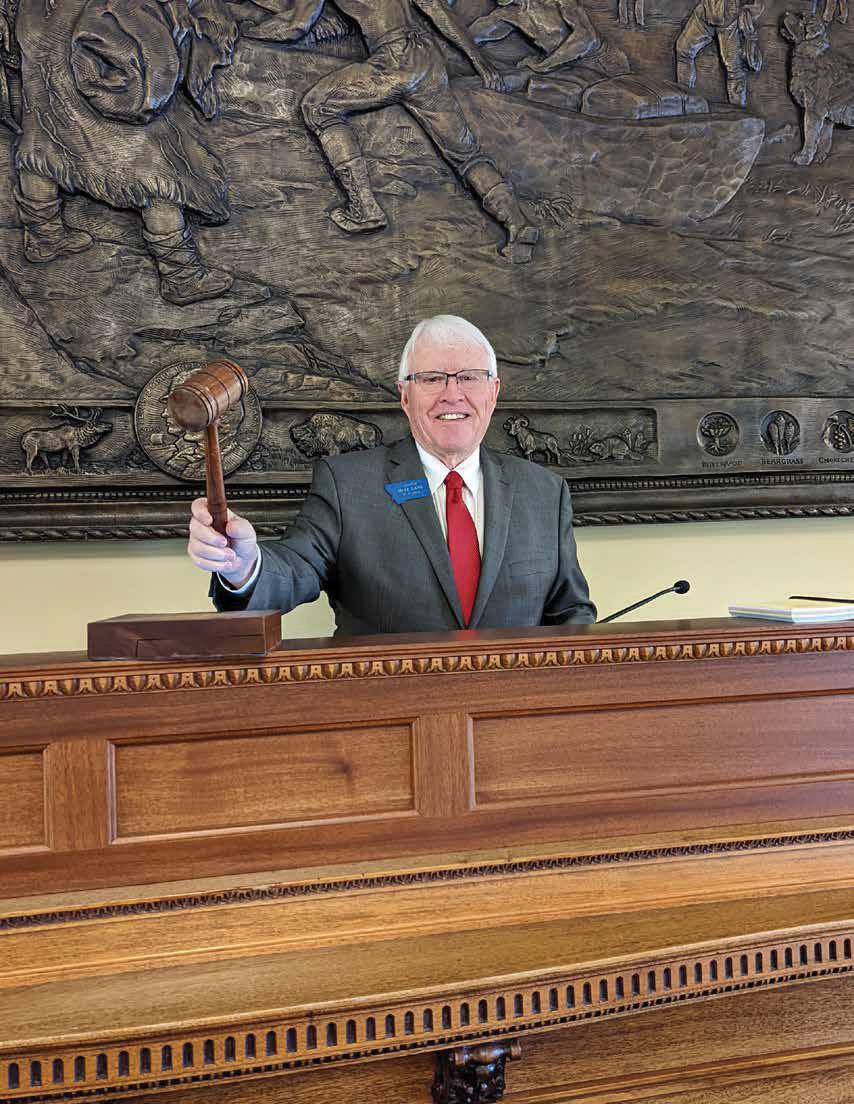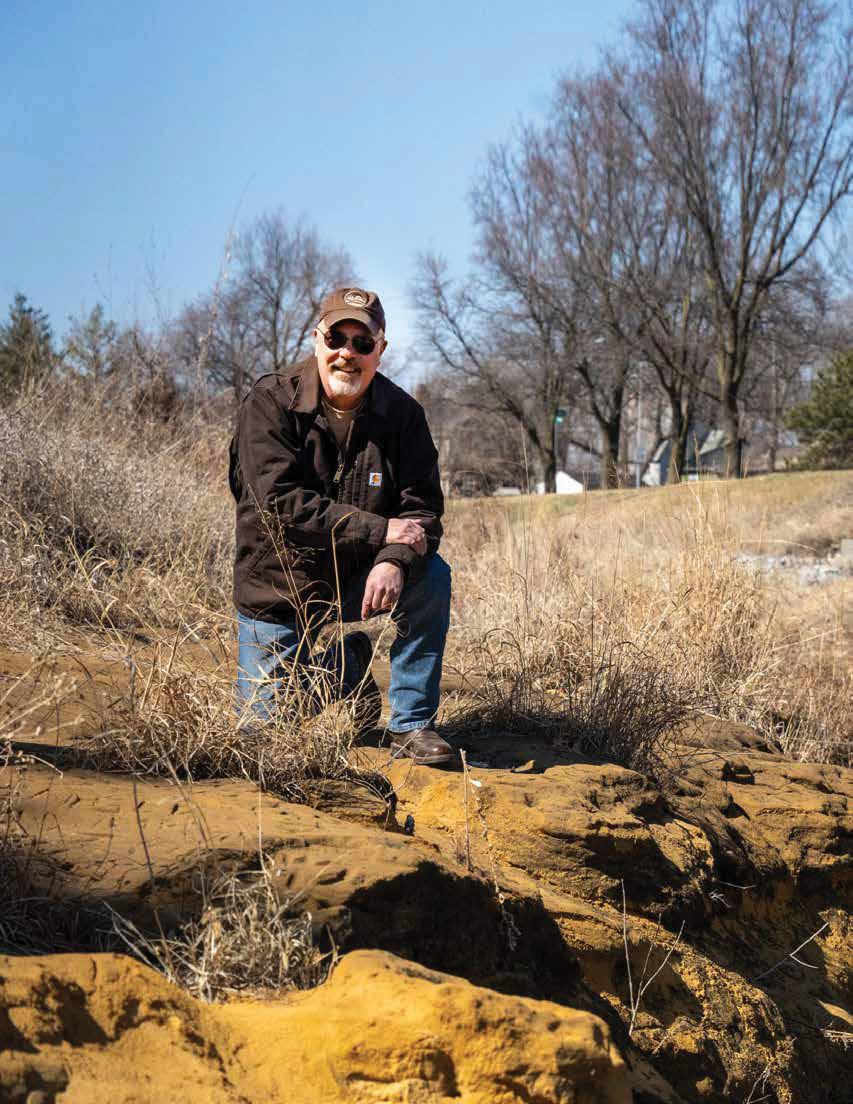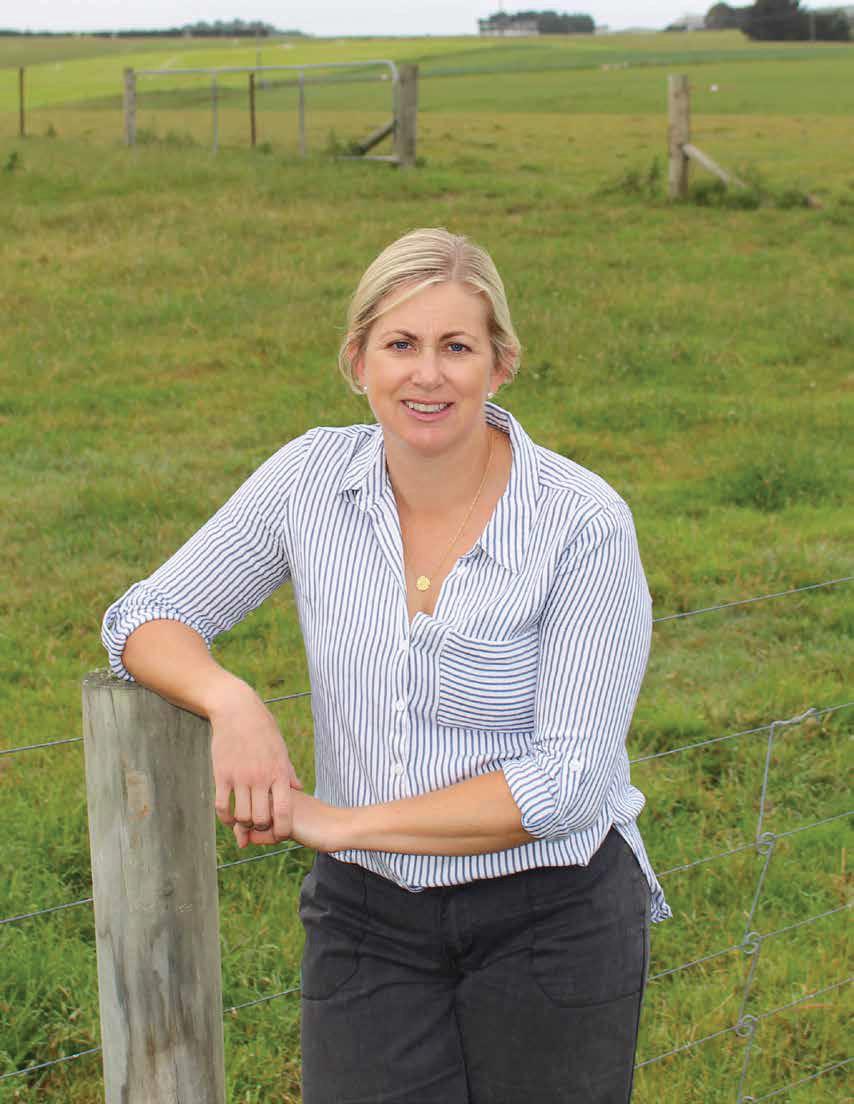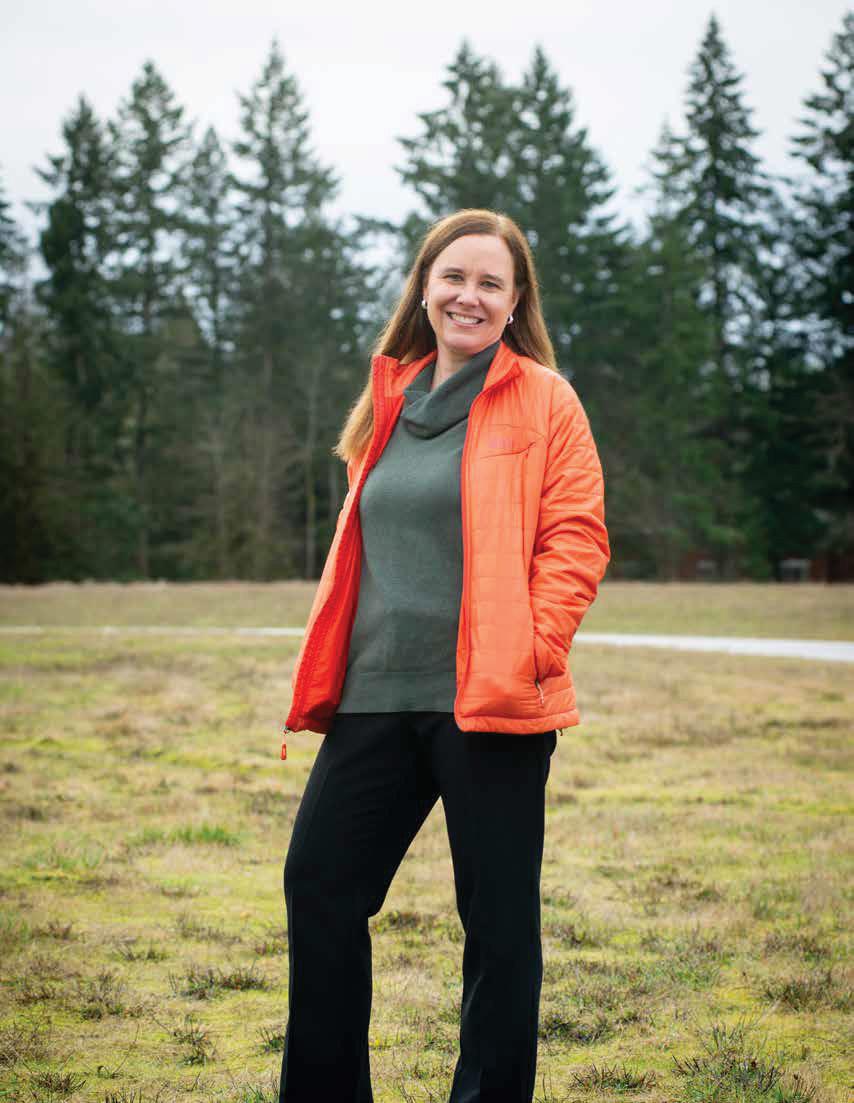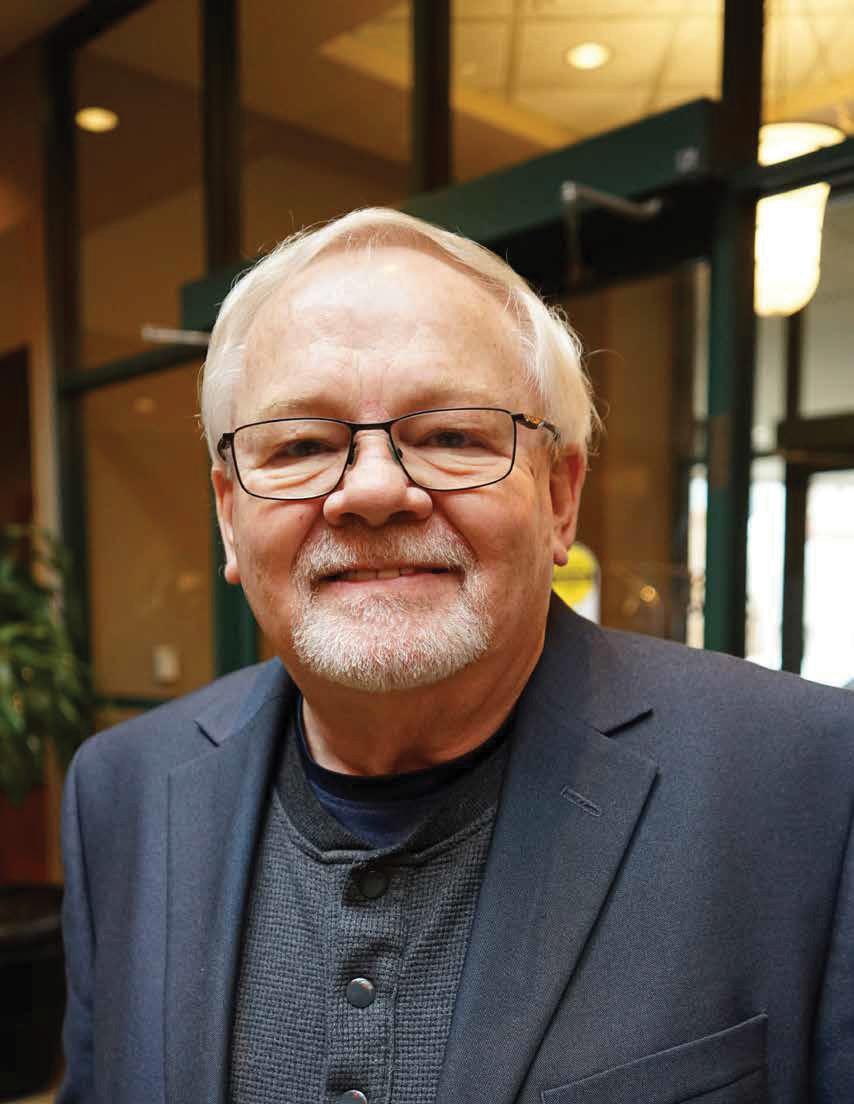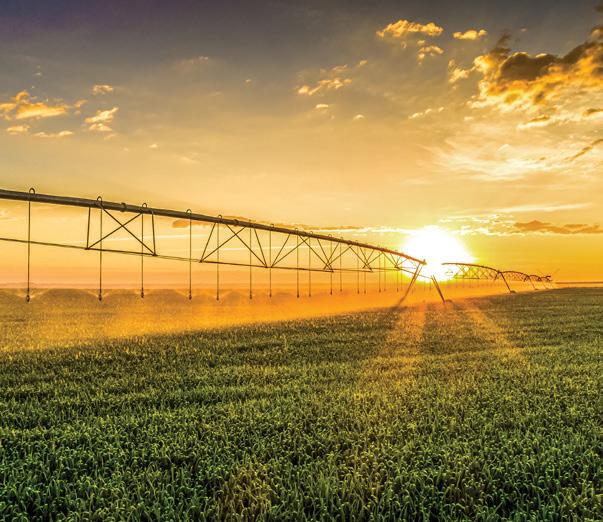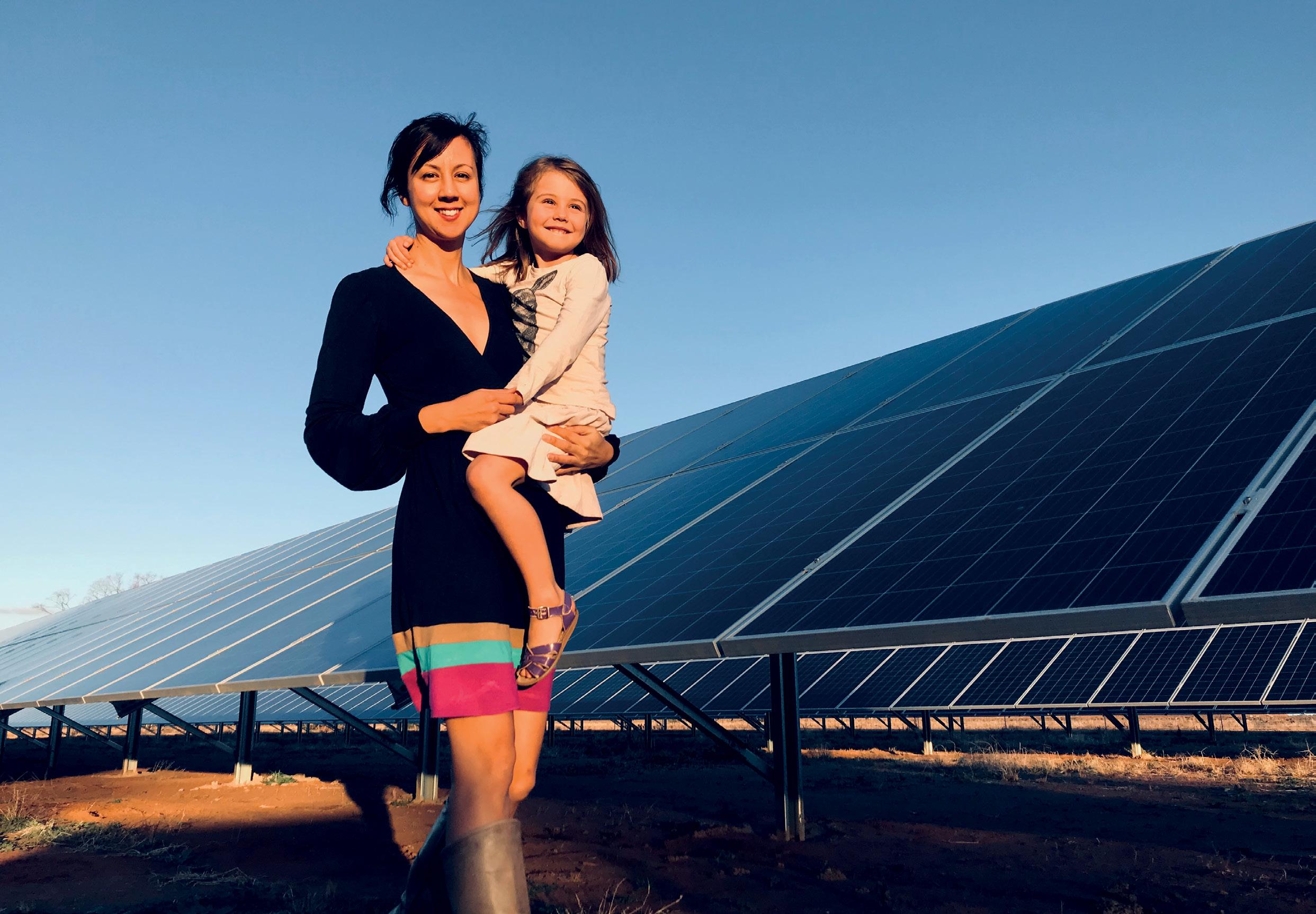
5 minute read
A passion for renewable energy – on and off the farm
Karin Stark lives on a cotton and wheat farm in Narromine, New South Wales (NSW). This gives her a first-hand perspective on the energy challenges faced by farmers. Energy is one of the fastest-growing costs for farmers. Karin’s focus is on helping them to significantly reduce those costs, and emissions, by facilitating the adoption of on-farm renewables.
Karin is the director of Farm Renewables Consulting, an Australianowned business based in Central West NSW. Their work with government, community groups, and private industry is based on the premise that shared stories and lived experiences are some of the best ways to create meaningful change.
Advertisement
Karin has a background in environmental management and the design, delivery, and evaluation of community-based social marketing. Being a passionate advocate in this area, she founded and convenes the annual National Renewables in Agriculture Conference and Expo.
We caught up with Karin to hear more about her take on renewable energy.
Located 25 minutes from Narromine in the centre of NSW sits Australia’s biggest solar/diesel hybrid pumping system. The property, which is owned and operated by fourth generation farmer Jon Elder and his partner Karin Stark, is used for irrigated farming of cotton and wheat. Karin runs the National Renewables in Agriculture Conference, which will next be held 21 June in Dubbo, NSW.
“Water is extracted from groundwater predominantly to irrigate cotton over the summer months. We use flood irrigation through channels around the farm. We also grow wheat, barley, safflower, and lupins over the winter months, which rely on rainfall. Our average rainfall is 500mm a year.”
In 2018 the farm engaged a solar pumping solutions company to replace one of the three on-farm diesel-powered bores with a solar/diesel hybrid pumping bore – the largest of its kind in Australia.
The company installed a 250 kilowatt (kW) electric motor with a 500 kW CAT diesel-powered generator, a 500 kW solar array approximately one hectare in area, plus associated inverters, variable speed drives, and control systems.
According to Karin, prior to the installation of their solar/diesel microgrid, the farm’s biggest contributor to operating costs was energy. The farm used around 400,000 litres (L) of diesel annually to drive the diesel-powered bore and lift pumps that are needed to extract large volumes of water from depths of up to 90m.
Karin said the system made strong financial sense due to the return of investment period being just five years, and the system saving $180,000 worth of diesel in its first year. The solar/diesel pump generated significant interest locally and interstate. “Diesel use in Australian agriculture makes up approximately 80 percent of energy used on-farm and about eight percent of agriculture emissions. This new system was lauded as a step change in irrigated agriculture due to reducing costs and emissions, and building resilience for farming businesses.“
Despite these early signs of success, Karin said the project has not been all smooth sailing. The solar/diesel pump has encountered issues with the blending of solar and diesel power sources and with the sizing of the diesel-powered generator. The large generator isn’t working hard enough, thus causing damage to the engine itself. This process is sometimes referred to as glazing.
“A solution to these issues, likely to include a battery, is still being worked through. Early adopters help to highlight issues in emerging technology and help decrease the level of risk taken by others on projects, so there have been benefits in the process.”
One of the first steps in transitioning energy to renewables is understanding where your biggest energy users are and ensuring equipment is operating as efficiently as possible. An equally important preliminary step is investigating which options for renewables are suitable for you. Consider constraints on your local grid, which can impact whether excess energy can be exported, and an income secured.
Karin said when farmers are looking to replace diesel and electricity on their property with renewables, it’s a smart idea to find others who have installed something similar and ask for their feedback and learnings regarding the process. “Always try to find businesses who have successfully worked on other systems on farms and who understand how to design a smart, efficient system. This may incorporate changes to farm operations to make the most of the renewable energy resource.”
There is no doubt renewable energy is something Karin is very passionate about and she says there is an urgent need to phase out a high carbon way of living. “The use of fossil fuels is driving climate change, and renewable energy provides a fantastic solution for our energy needs. In farming we need clean, cheap energy to stay competitive. To demonstrate we are decarbonising as a sector in order to meet consumer desires and continue to trade internationally. We can combine energy generation and farming on a big scale so land is kept in production, the farmer earns a secondary income, and low carbon energy is fed into the grid.”
The National Renewables in Agriculture Conference and Expo 2023 (renewablesinagconference.com.au) in Australia is an opportunity to hear directly from farmers who have installed renewables, including feedback about what the benefits have been and what they have learnt.
In Australia banks are often willing to lend with a discounted interest rate if a project is seen as a green option, building sustainability on-farm. There are other business-focused grants available for assisting with the costs of renewables on farms that can be found by contacting relevant government departments.
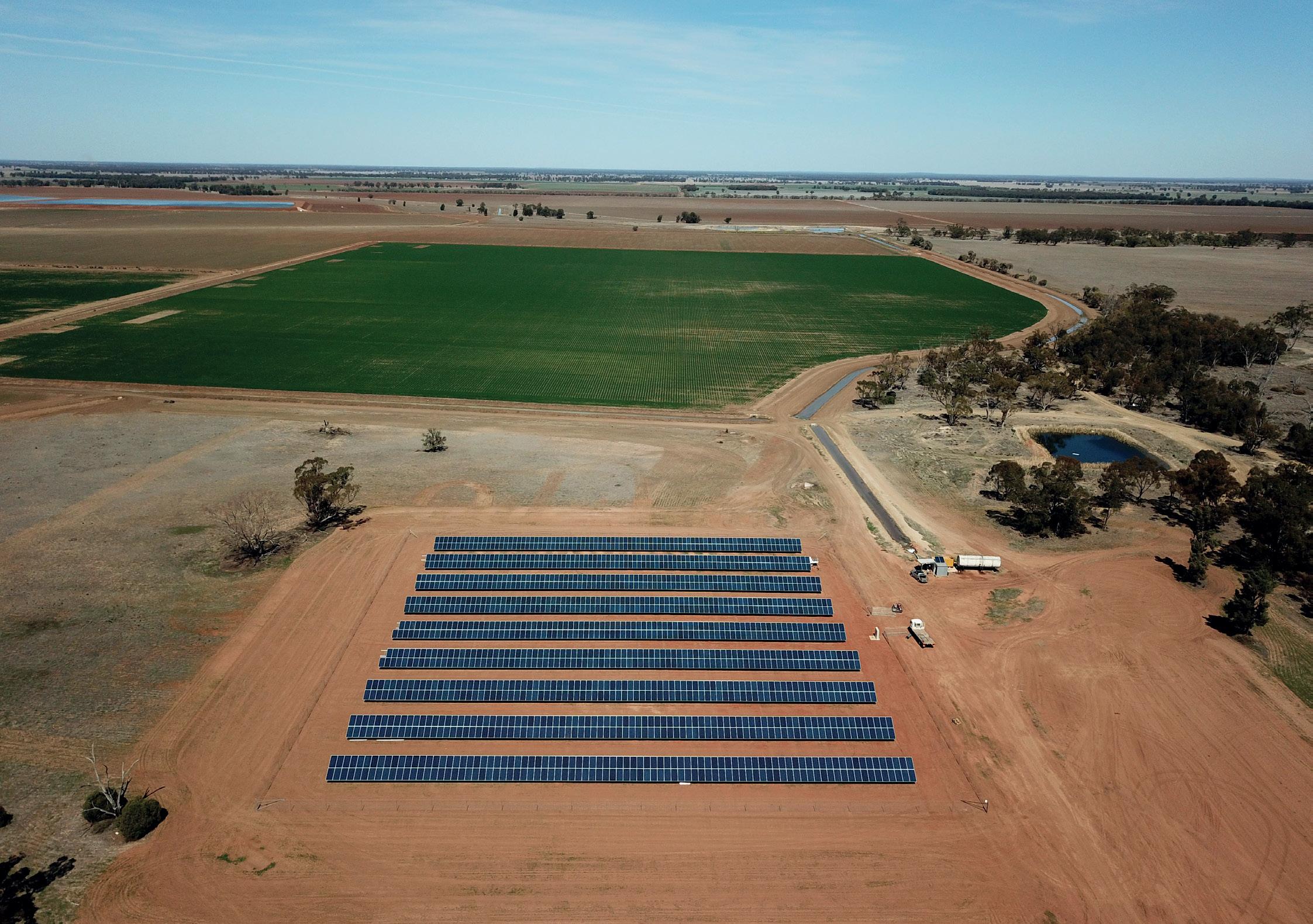
*As a rule of thumb, standard large-scale solar farms (singleaxis tracking) utilise an average of around 2 hectares per 1 MW (dc)1 of installed solar capacity. In practical terms, a 100 MWdc2 solar farm would require access to approximately 200 hectares of land. (The land area needed for every megawatt of installed capacity is expected to decline as solar modules become more efficient.) The Australian Energy Market Operator has estimated that up to 50 GW3 of ‘variable renewable energy’ (wind and solar power) capacity will need to be installed between 2020 and 2040 to replace Australia’s retiring coal-fired power stations.4
How much land is needed for solar farms?
Total land area used for agriculture
Total land required to replace coal-fired power stations with solar
In the unlikely event that all of this new variable renewable energy were to be in the form of large-scale solar, then the total land required to support this solar generation would be up to 120,000 hectares.5 That’s the equivalent of less than 0.016 percent of Australia’s total land area, or 0.027 per cent of Australia’s total land currently used for agricultural production.6 By contrast, Australian agriculture currently accounts for 58 percent of Australian land use. The impacts of the relatively small percentage of cleared rural land required to support new solar power projects in Australia can be further minimised by pursuing integrated land uses with other sectors.
New Zealand
In New Zealand we are starting to see innovative funding for transitions to renewable energy systems, although we still have a way to go to apply this sort of change across the agriculture sector. The EECA Technology demonstration fund supports the early adoption of proven technology or an innovative process improvement opportunity that has yet to be widely deployed in New Zealand, but they don’t yet go as far as subsiding solar panels.
In late April 2023 the Ministry for the Environment and the Ministry of Business, Innovation and Employment opened consultation on proposals to improve renewable electricity generation and the electricity transmission consent process. The consultation package states it’s “to help Aotearoa New Zealand meet its emissions reduction targets”. The package of national direction instruments proposes to provide more enabling policy direction for renewable electricity infrastructure development, particularly wind and solar generation and transmission projects. The proposals cover ways to enable small and community-scale renewable electricity generation. These projects often face disproportionate consenting requirements and costs relative to their adverse effects. New technologies, such as grid-connected battery storage, will also be covered. Consultation closed on 1 June 2023. Information can be found at www.mbie.govt.nz/have-your-say/renewable-electricity
IrrigationNZ’s submission can be found at www.irrigationnz.co.nz/News/SubmissionsNational
